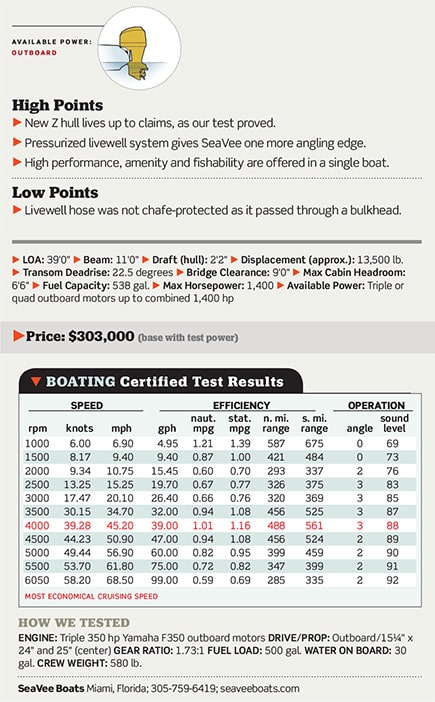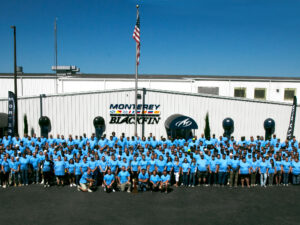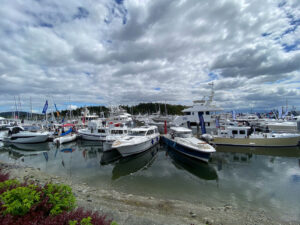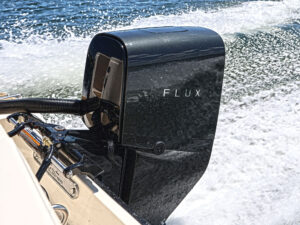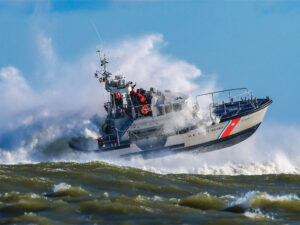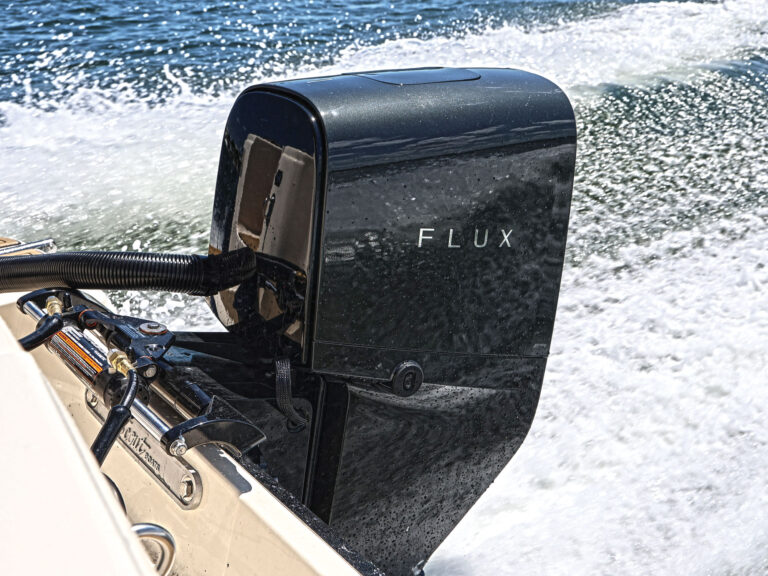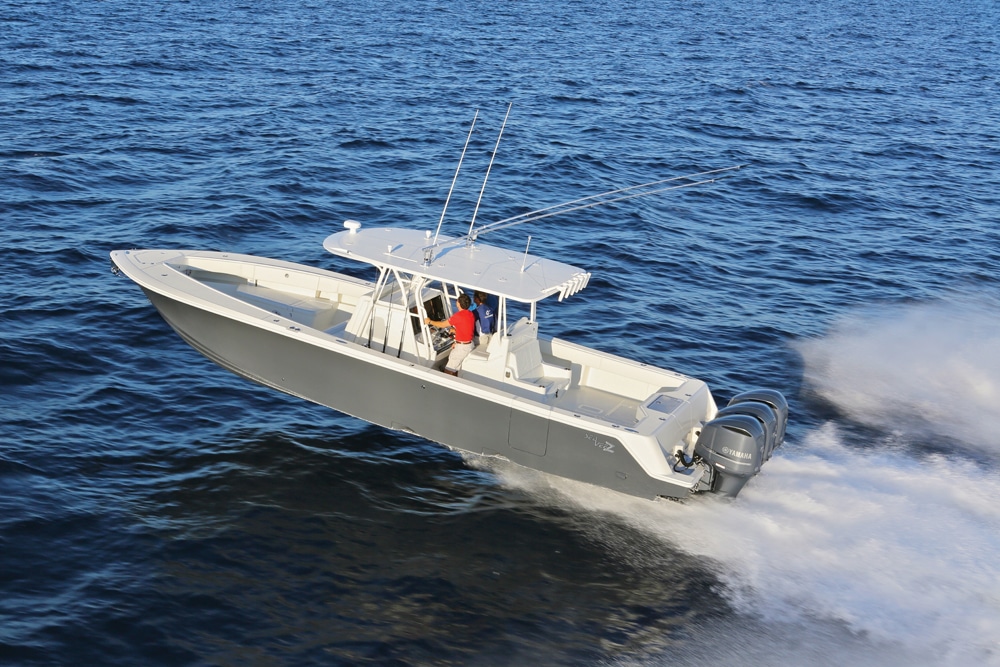
SeaVee 390Z
Beam: 11’0″
Draft (hull): 2’2″
Displacement (approx.): 13,500 lb.
Transom Deadrise: 22.5 degrees
Bridge Clearance: 9’0″
Max Cabin Headroom: 6’6″
Fuel Capacity: 538 gal.
Max Horsepower: 1,400
Available Power: Triple or quad outboard motors up to combined 1,400 hp
More Information: seaveeboats.com
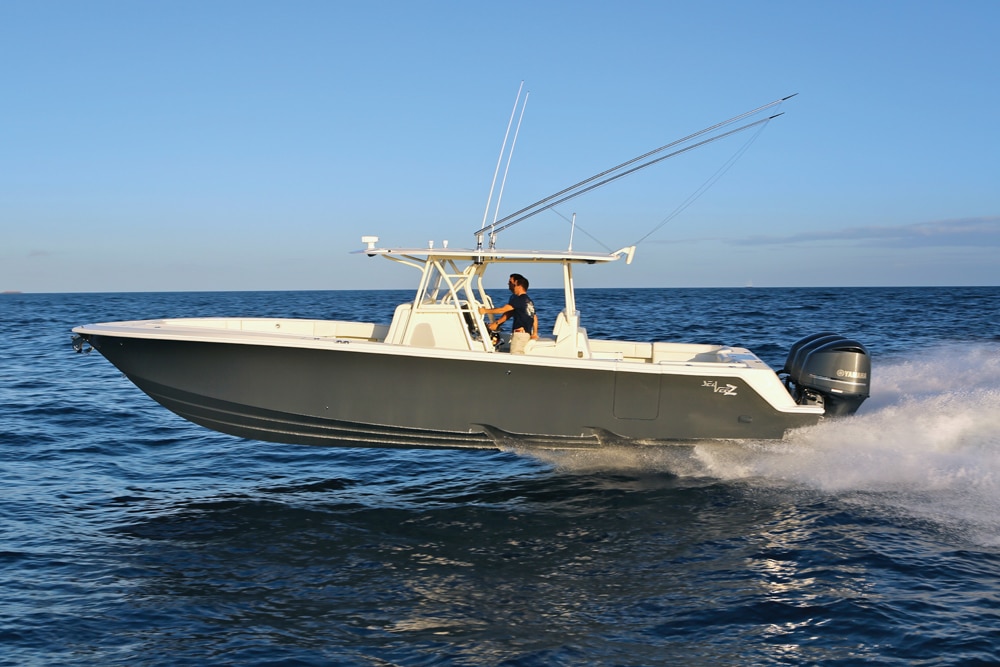
SeaVee 390Z
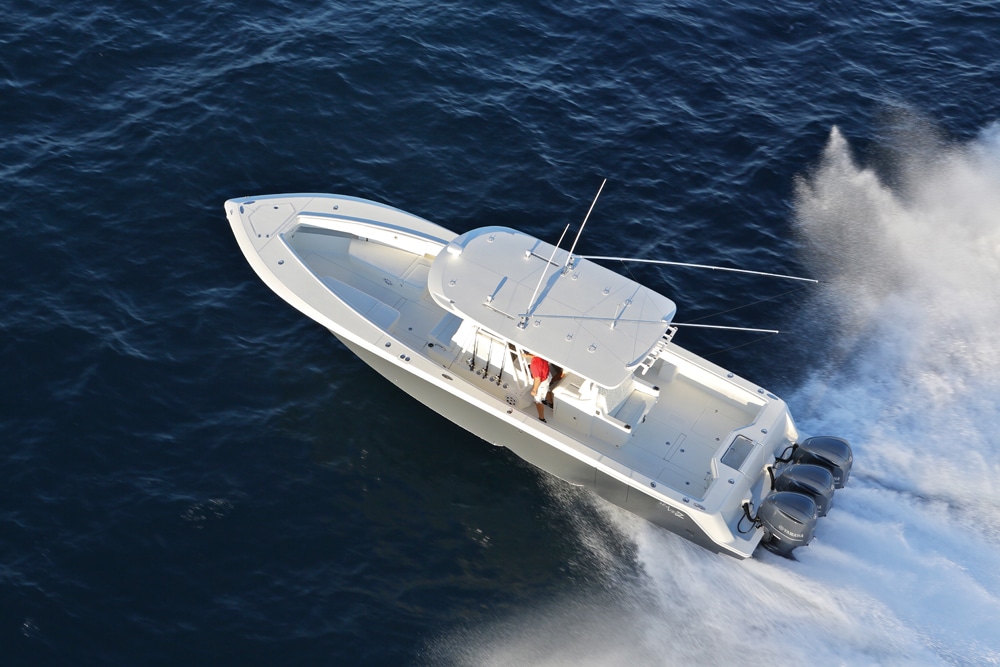
SeaVee 390Z
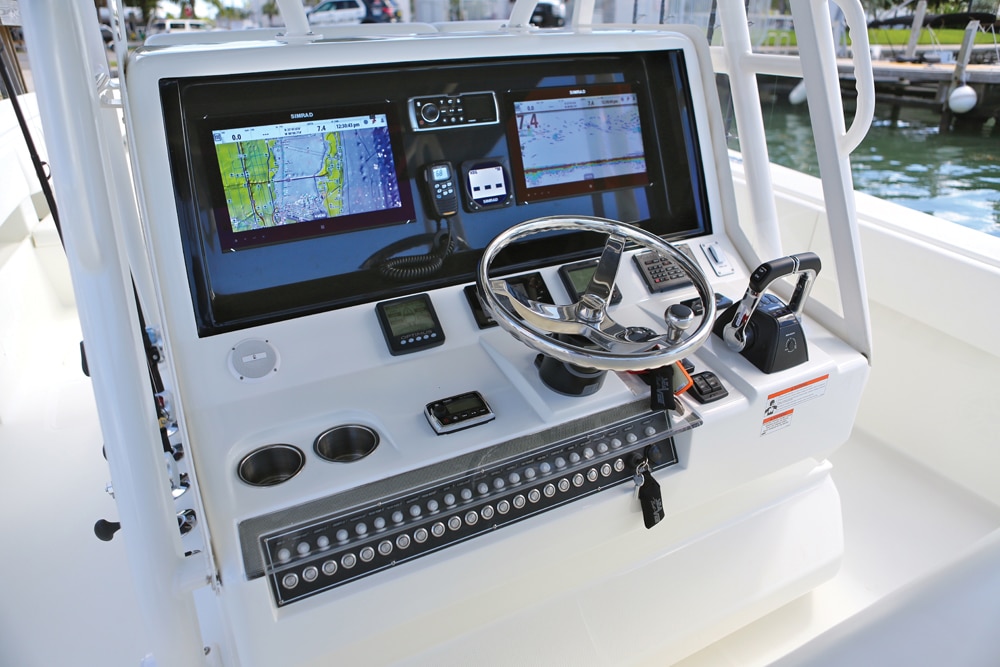
SeaVee 390Z
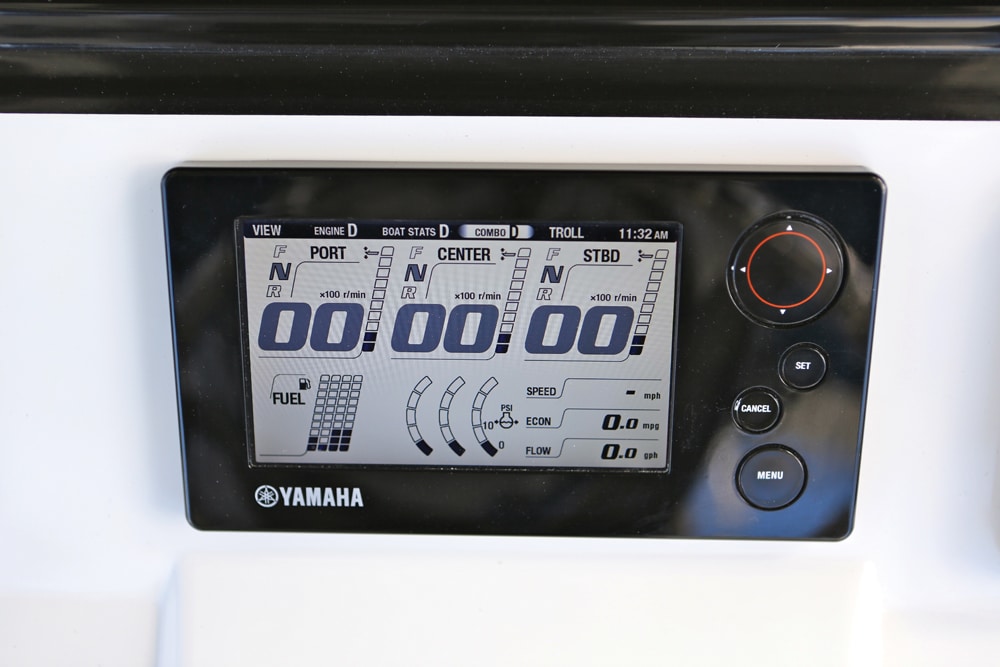
SeaVee 390Z
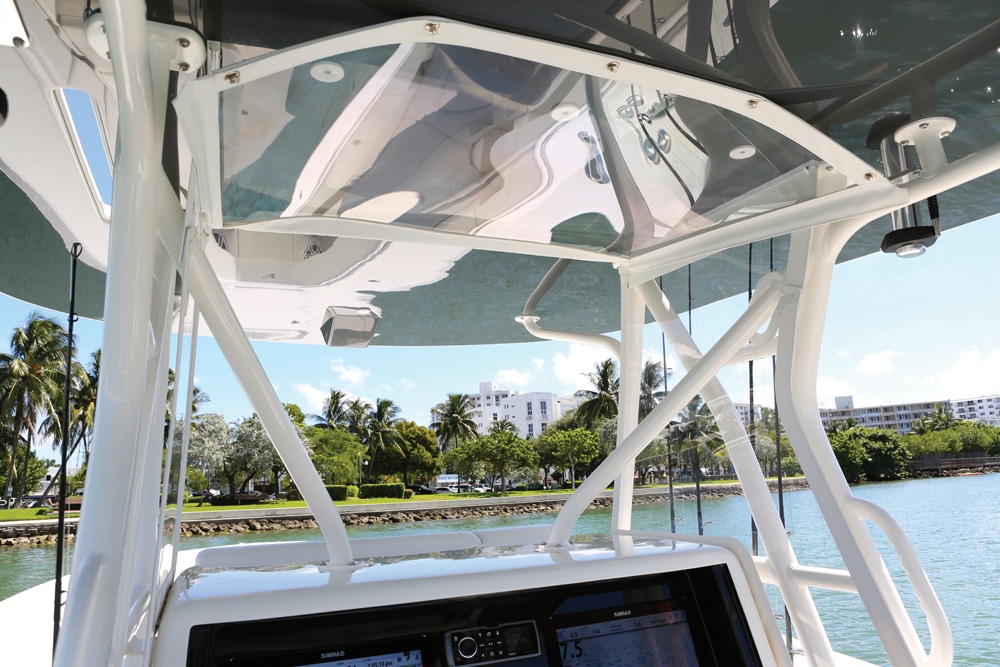
SeaVee 390Z
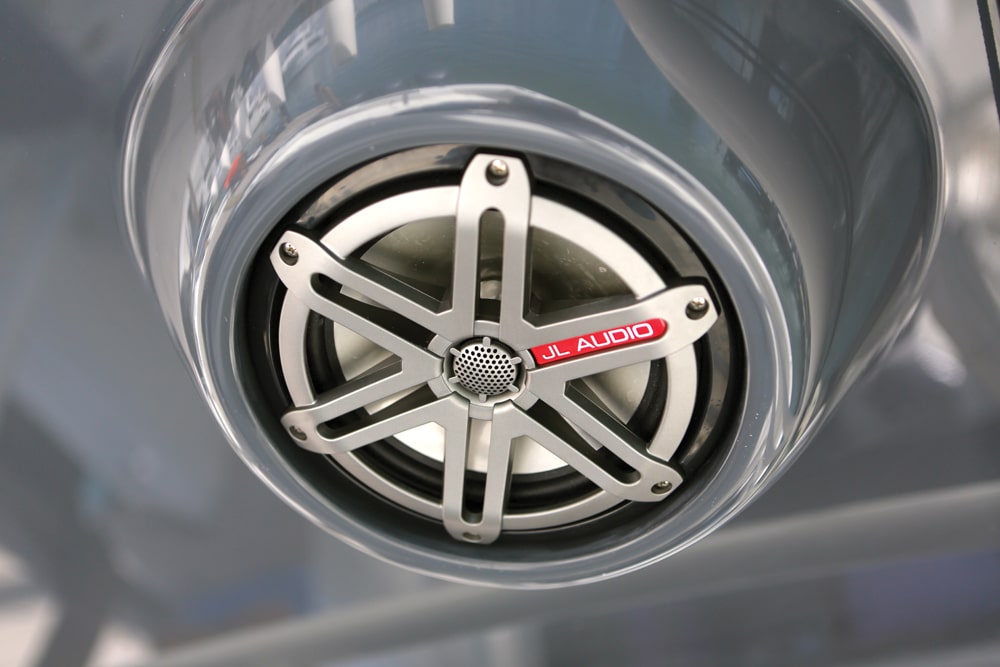
SeaVee 390Z
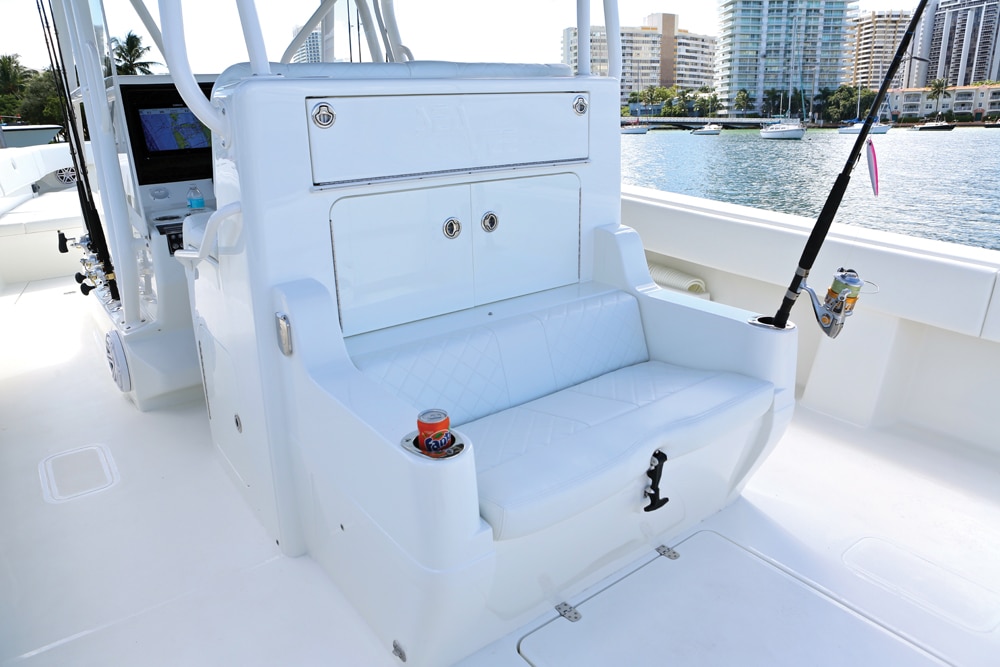
SeaVee 390Z
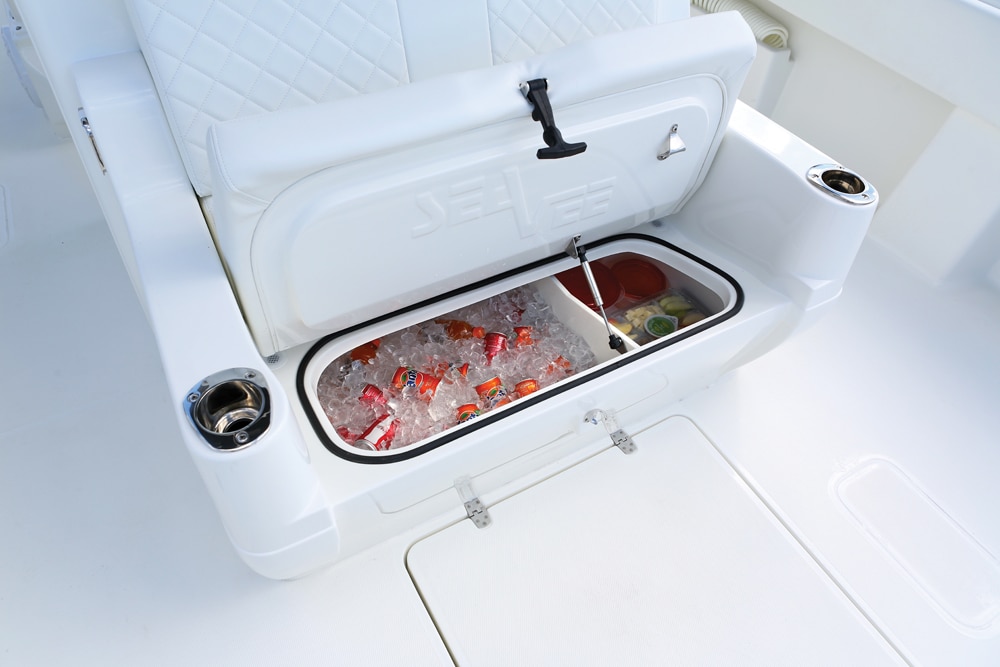
SeaVee 390Z
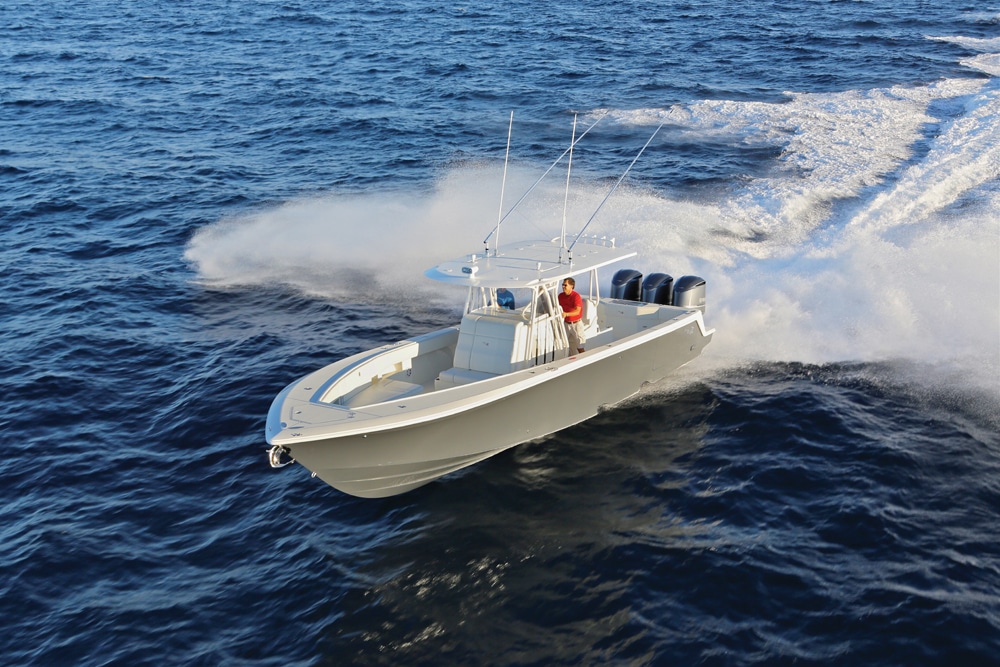
SeaVee 390Z
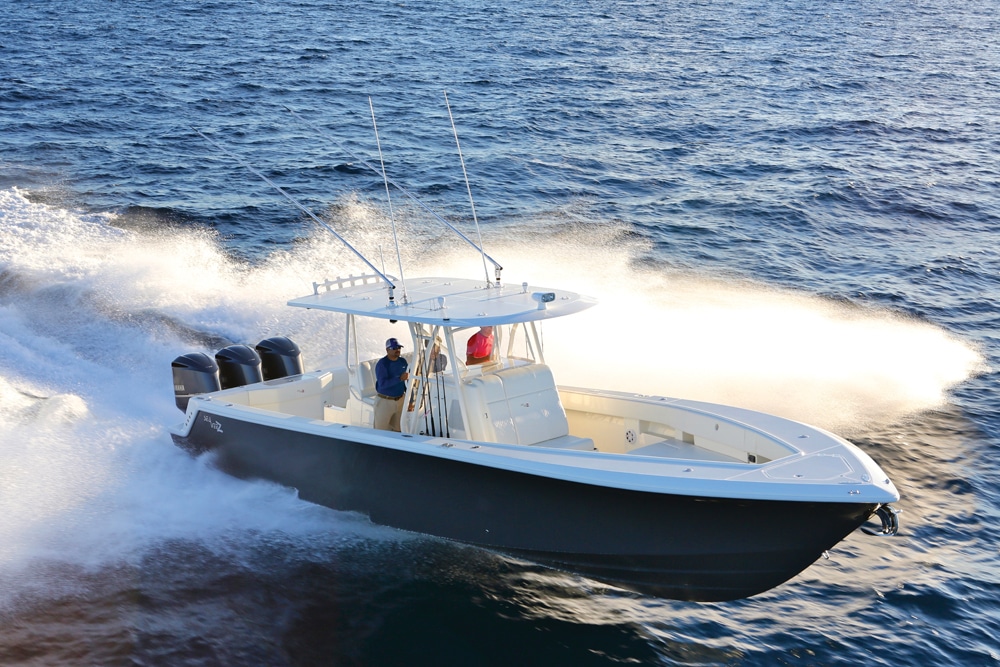
SeaVee 390Z
SeaVee boats have long been heralded for their great-running conventional deep-V hulls. Now, the company has introduced a new series of step-hull boats called the SeaVee Z series in 32-, 34- and 39-foot lengths. I met with SeaVee’s design team aboard a 390Z, both on land and on water, to get to the truth behind these new double-step center-console boats. We discovered many things, most notably that, instead of following in the wake of others’ designs, SeaVee set its own course for a higher-performing, more efficient hull form.
The design is a collaboration between SeaVee Boats co-owner Ralph Torres and longtime SeaVee designer Robert Kaidy, a principal at Ocean5 naval architects. Upon a first quick glance at the boat from the side, experienced boaters might classify the steps as being quite large (guilty!). Large steps usually mean a boat that requires a lot of attention to the helm, needing trim and throttle to control.
Looks can be deceiving.
The Z models actually feature a pair of small, 2-inch-tall steps. The vents at the chines are what are oversized, the idea being that most step vents are too small. These big openings are intended to prevent the vents from clogging up and to allow more air to be fed to the hull, alleviating the “hitch” or “hesitation” — it’s an instantaneous loss of speed and stability, really — that many stepped hulls exhibit due to clogged vents. If you’ve driven a stepped hull or had one roar past you, you may have heard the chuff-chuff-chuff sound that accompanies this phenomena.
During my trial of the 390Z I can say that I did not experience this hesitation. I will also say that I have experienced it aboard other boats. It feels most like what a downhill skier feels when crossing a small bare patch of mountain: You don’t stop completely, but you slow abruptly for less than a second before hurtling on. So our sea trial confirmed the design principle behind the vents.
The second key feature incorporated into SeaVee’s Z series hulls are the so-called “speed rails.” Simply put, these are chines and strakes with 90-degree inside corners on them. Only the aft portion of the chines and strakes are speed rails; forward, the corner fades out and fairs into the bottom like a conventional chine or strake.
Speed rails keep the boat tracking true, particularly in turns. Many stepped-hull boats get “squirrelly” when turning. But I was able to haul the SeaVee 390Z through lock-to-lock turns at 40 mph. In so doing, I maintained as much confidence as I would when commanding a conventional V-hull boat. Confirmation by sea trial.
Finally, the Z series hulls feature a flat keel for most of the length of the underbody. This stays wet and allows installation of through-hull intakes and transducers to be successful, something always problematic for stepped-hull boats. Perhaps more importantly, the flat keel section provides more lift, easing the transition onto plane. Just as critical, it ensures that the boat does not exhibit excessive bow rise, a common flaw with many stepped hulls. Since Boating measures bow rise as part of our certified boat tests, I can say that the SeaVee 390Z does not exhibit excessive inclination (bow rise); the most I measured was 3 degrees.
In fact, during my test, the boat’s trim seemed “built in” to this, the stepped bottom holding it at almost the same angle of inclination regardless of speed or our direction relative to the seas. I was most pleased to find that, while running down-sea in the day’s 2- to 4-foot waves, the 390Z carried its bow well, refusing to stuff or plunge. Quirky, bow-heavy, down-sea handling is the bane of many stepped-hull boats, but apparently not this one.
I’ve used a lot of ink and space to describe the new SeaVee Z hull bottom. But SeaVee hasn’t stood still when it comes to features, outfitting, or topside design either.
The 390Z is a deeper boat than the original 390 and also features a salty rise in the sheer line lacking aboard its stablemate. The features combined to provide the optional electrically reclining bow seats with high, comfortable backrests in our test boat. In the head, accessed by swooshing it’s pneumatically actuated hatch aside, I discovered a pleasant space made bright by a port, functional by a sink and mirror, and ample with 6 feet 6 inches of headroom.
The tester’s T-top — like the bow seats, just one of many options this semicustom builder can provide — extended far enough to provide shade over part of the aft cockpit. That’s a good thing, since some cool seating slides out from the leaning posts and crew seated there will appreciate the shade. The helm seat is triple-wide, and the geometry of the helm panel is such that all controls, gauges and displays were easy to access while retaining excellent visibility whether seated or standing. The hull-side dive door will delight your crew.
Being a SeaVee, the tester didn’t lack for fishing gear, what with two livewells installed, Top Gun outriggers and more rod holders than most any other three boats you’d care to board. Those are just the highlights. Again, SeaVee outfits according to owner demands, rather than an equipment list.
My advice? If you’re a discerning boater in the market for a giga-size CC, you need to check out the SeaVee 390Z.
